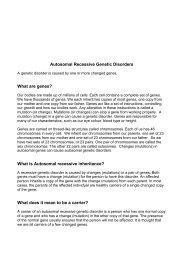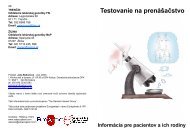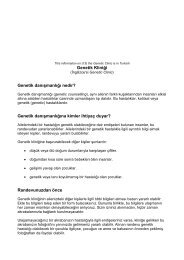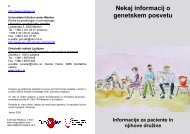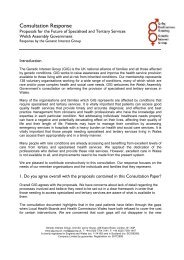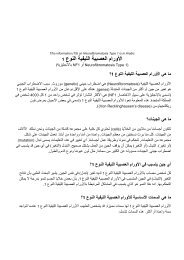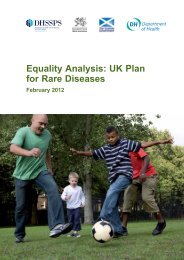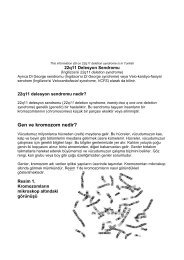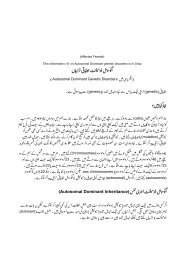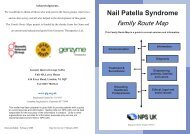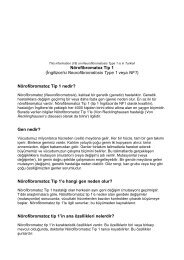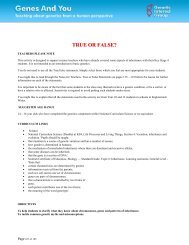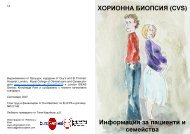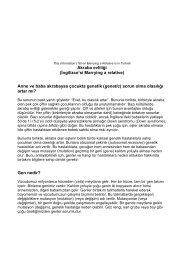FAQ on Biobanks - Genetic Alliance UK
FAQ on Biobanks - Genetic Alliance UK
FAQ on Biobanks - Genetic Alliance UK
Create successful ePaper yourself
Turn your PDF publications into a flip-book with our unique Google optimized e-Paper software.
Introducti<strong>on</strong><br />
Developments in genomics and in bio-informatics have made it possible to analyse<br />
quantities of data and samples that, even a few short years ago, would have been<br />
unimaginable. This has created the possibility of examining the complex interplay that<br />
operates between genes, and between genetic, envir<strong>on</strong>mental and lifestyle factors in the<br />
search to understand comm<strong>on</strong> complex diseases (heart disease, diabetes, cancer and mental<br />
health disorders, to name but a few) and to develop targeted therapies to treat and possibly<br />
even cure them.<br />
Generating the data necessary to undertake this research has led to the establishment of<br />
“biobanks” in the public and the private sector around the world. The largest of these may<br />
c<strong>on</strong>tain tissue samples and data from half a milli<strong>on</strong> or more people. Patients, families and<br />
members of the general public are increasingly likely to be asked to volunteer to c<strong>on</strong>tribute<br />
to a biobank to help medical research.<br />
In this fast changing field it is important that those asked to c<strong>on</strong>tribute their tissue and<br />
to volunteer potentially sensitive pers<strong>on</strong>al informati<strong>on</strong> have the opportunity to be clear<br />
about what is being asked of them. To help promote understanding and to secure informed<br />
involvement with the activities of biobanks and the research they make possible we have<br />
assembled a list of questi<strong>on</strong>s that have been frequently asked of us by those c<strong>on</strong>templating<br />
volunteering to be part of this large scale research activity. The answers and the current<br />
booklet are a result of a collaborati<strong>on</strong> between the European <strong>Genetic</strong> <strong>Alliance</strong>s Network<br />
(EGAN) and Roche. We hope the informati<strong>on</strong> given c<strong>on</strong>tributes to clarify the aims and<br />
purposes of biobanks, so as to help promote informed engagement by patient and from<br />
healthy citizens.<br />
The answers given to these questi<strong>on</strong>s are inevitably general. They may not all apply in every<br />
detail to any particular biobank, so if you are asked to volunteer and you have specific issues<br />
you wish to resolve, you should discuss them with the sample collector or other resp<strong>on</strong>sible<br />
pers<strong>on</strong>s before proceeding.<br />
We look forward to any comments and suggesti<strong>on</strong>s for improvements to this leaflet. Please<br />
send them to alastair@gig.org.uk and we will endeavour to incorporate them in any future<br />
revisi<strong>on</strong> of this leaflet.<br />
<str<strong>on</strong>g>FAQ</str<strong>on</strong>g> <strong>on</strong> <strong>Biobanks</strong>



